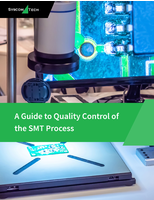From Rags to Riches

From Rags to Riches
Increased production demands and rising disposal costs prompted the need for an expansion at the Elledge Wastewater Treatment facility in Winston-Salem, NC. The facility services the greater Winston-Salem area, which is growing at a considerable rate. The facility was using conveyors to move dewatered sludge from their centrifuge to a storage building. From here it was loaded onto trucks and transported to privately owned sites chosen for the City of Winston-Salem Class B Land Application Program.
"Due to higher restrictions on the class B product, reduced land fill space and increased landfill cost Winston-Salem looked for a way to reduce disposal volume and make the product user friendly," says Bruce Casey, Biosolids Drying Facility Plant Supervisor.
The solution was an Andritz biosolids dryer facility, which would turn the dewatered sludge into a marketable Class A, EQ (Exceptional Quality) fertilizer pellet.
Before, the conversion to a dual cake-pump system, a conveyor was transporting the dewatered sludge to a storage building located on left side of the centrifuge building.
Now, conveyors are depositing the sludge into a custom extended hopper seepex BTI 70-24 Progressive Cavity pump with paddle mixers to prevent bridging on top of the feed auger. seepex will custom design hopper extensions to meet any application. The pump size 70-24 can handle up to 640 gpm dewatered biosolids. The BTI design pump can handle up to 35% dry solids contents. A ribbon-screw auger, moves the cake into the compression zone at a rate that is three times greater than the physical capacity of the pumping elements. The high shear of the ribbon-auger and circulation of the thixotropic sludge reduces the apparent viscosity, so it is easier and more efficient to pump.
The pressure side of the pump is fitted with a chemical injection ring, which meters polymer into the annulus of the sludge pipe, using a MD 012-24 seepex metering pump. Polymer injection reduces the friction loss from the cake and the resulting discharge pressures by up to 80%. The discharge pipe is fitted with a pressure switch that activates the polymer injection pump when the pressure reaches unsafe levels. The BTI pumps the sludge through 120 feet of 12-in pipe to the dryer building, located on the right side of the original building.
Andritz planned and completed construction of the dryer building in 2007. It was designed to turn dewatered sludge into dry fertilizer pellets that could be sold to farmers at a profit.
When the sludge arrives in the building it is deposited in a 24-hour storage bin. A second seepex BTE 70-24 sits below the storage bin. Here the dewatered sludge is pumped to a mixer and blended with pellets. The auger forces the material into the compression zone where it is moved into the piping by the cavities formed between the rotor and stator (materials are custom selected for every application). The mixture is then run through the Andritz dryer system. The resulting product is fertilizer pellets.
To summarize, Winston -Salem needed to avoid rising transport and landfill costs. By adding the dryer building, Winston-Salem had effectively turned a cost center into a profit center. By using seepex Progressive Cavity Pumps instead of conveyors they contained the sludge and saved roughly $1,500 in capital costs per foot of conveyor.
"We needed to find a way to reduce cost and with the help of the seepex pumps we now have a system in place which will allow us to maintain economical and ecofriendly water treatment for Winston Salem," says Bruce.




